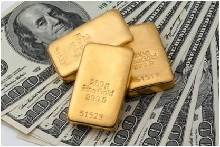Rate Hike – Golden Situation Or Not?
 Finally! The Fed did not chicken out and managed to deliver a 25-basis point hike. What does it mean for the U.S. economy and the gold market?
Finally! The Fed did not chicken out and managed to deliver a 25-basis point hike. What does it mean for the U.S. economy and the gold market?
In line with expectations, the Fed ended (unanimously!) the zero-rate era which lasted nearly a decade. The FOMC members believed that the economic activity had been expanding at a moderate pace, and considered risks to the outlook for both economic activity and the labor market balanced. The U.S. central bank stated that the U.S. labor market had considerably improved last year and judged that the inflation rate would rise to 2 percent target over the medium term. That is how the Fed justified the interest rate hike.
The groundbreaking paragraph of the released statement is as follows:
“The Committee judges that there has been considerable improvement in labor market conditions this year, and it is reasonably confident that inflation will rise, over the medium term, to its 2 percent objective. Given the economic outlook, and recognizing the time it takes for policy actions to affect future economic outcomes, the Committee decided to raise the target range for the federal funds rate to 1/4 to 1/2 percent. The stance of monetary policy remains accommodative after this increase, thereby supporting further improvement in labor market conditions and a return to 2 percent inflation.”
However, the decision on hiking was associated with a dovish assurance that the path of future rate hikes will be gradual:
“The Committee expects that economic conditions will evolve in a manner that will warrant only gradual increases in the federal funds rate; the federal funds rate is likely to remain, for some time, below levels that are expected to prevail in the longer run.”
Moreover, the FOMC maintained its existing policy of reinvesting principal payments from its bond holdings. It means that the end of the zero-rate era does not mean the end of accommodative monetary policy.
Regarding the Summary of Economic Projections, the FOMC members lowered their projections for the federal funds rate, but not very significantly. The Fed officials reduced the forecasts of the level of interest rates in 2017 and 2018 (from 2.6 percent and 3.4 percent to 2.3 percent and 3.3. percent, respectively), but the expected level of interest rates next rate remained unchanged at 1.375 percent. Thus, the U.S. central bank signals four more hikes in 2016 (much more than markets are expecting right now).
Moreover, the FOMC members increased slightly their projections of change in real gross domestic product next year from 2.3 to 2.4 percent. Therefore, the Summary of Economic Projections is more hawkish than expected.
Nonetheless, the price of gold actually increased after the Fed hike. It means two things. First, the Summary of Economic Projections was dovish enough for the markets. Second, the December hike had already been factored into the price of the yellow metal (as we had believed) and investors adopted a “sell the rumor, buy the fact” strategy.
As a novelty, the Fed also issued an implementation note to provide the operational settings of the Federal Reserve's policy tools. We can read in it that (as we had predicted) the Fed increased the interest paid on required and excess reserve balances to 0.5 percent. The U.S. central bank also raised the interest it pays on overnight reverse repos from 0.05 percent to 0.25 percent and increased its discount rate by 0.25 basis points to 1.00 percent.
Summing up, the Fed has finally raised the federal funds rate target by 25 basis points, ending the zero-rate era. The U.S. central bank also increased its other interest rates, but maintained its existing policy of reinvesting principal payments from its bond holdings. The FOMC members lowered slightly their projections of the federal funds rate, but increased GDP forecasts for the next year. Since the Fed’s move had been highly anticipated and investors bought the fact, the price of gold ticked higher after the hike.
If you enjoyed the above analysis, we invite you to check out our other services dedicated to the precious metals investors. We invite you to join our gold newsletter today – you’ll also gain 7-day trial of our premium Gold& Silver Trading Alerts. It’s free and if you don’t like it, you can easily unsubscribe.
Arkadiusz Sieron
Sunshine Profits‘ Gold News Monitor and Market Overview Editor















